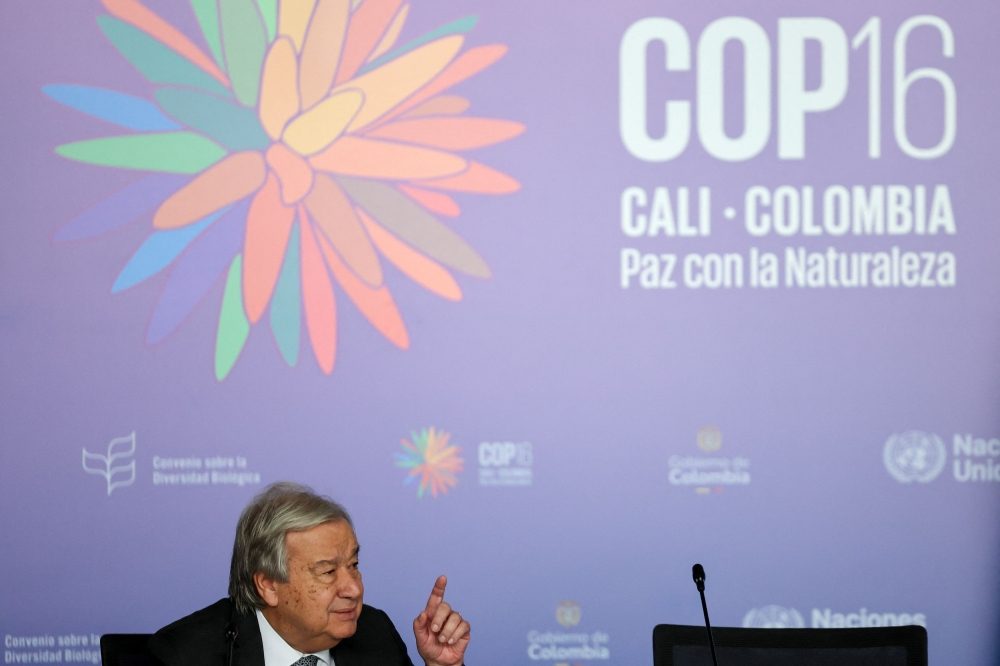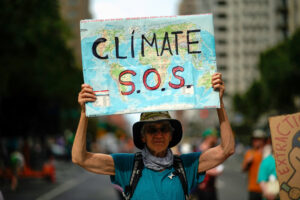- Governments allocate $1.8 trillion annually to environmentally harmful subsidies, which leads to an additional $5 trillion in private funding for industries like fossil fuels and industrial agriculture.
- Policymakers can leverage fiscal policy, establish new markets through emissions trading systems, and implement conservation payments to redirect private funding towards nature conservation efforts.
- The Kunming-Montreal Global Biodiversity Framework aims to phase out $500 billion in harmful subsidies by 2030 and mobilize $200 billion annually for biodiversity conservation.
When governments allocate money, they send a message. The power of that message ripples through economies, often triggering a wave of private spending. That effect rings true for biodiversity, on which governments have long made their message clear: Companies and citizens should feel free to prioritize activities that destroy our planet rather than sustain it.
Governments spend at least $1.8 trillion on environmentally harmful subsidies each year. That $1.8 trillion leads to another $5 trillion in private funding to the same deleterious industries — fossil fuel extraction, mining, commercial fishing, and industrial agriculture. The result is that nearly 7% of global GDP is dedicated to wrecking our natural world.
Carlos Manuel Rodriguez, CEO of the Global Environment Facility, put the problem simply “There is not a single country today that invests more in protecting nature than it spends on activities that destroy it. This has to change.”
Change starts with a shared vision, and the Kunming-Montreal Global Biodiversity Framework (GBF) aligns countries on the path forward. Target 18 of the GBF calls for substantial and progressive elimination, phase out, or reform of $500 billion in annual subsidies that are harmful to biodiversity. With a target of 2030, the GBF has a mandate to mobilize at least $200 billion annually for biodiversity conservation.
Policymakers now have a rare opportunity to leverage their market influence to facilitate a massive reallocation of private money toward saving nature — and there is no shortage of paths to pursue.
These include:
Fiscal policy
Designing fiscal policy — how governments apply and spend tax revenues — is a widely available and immediate avenue for developing positive incentives. For example, India’s Ecological Fiscal Transfers programme uses ecological indicators to determine how public funding is distributed from federal to state governments — with states rewarded for protecting and restoring forest cover.
The setup renders conservation a potential source of income for local governments. This incentive worked in India: localities self-disciplined, voluntarily increasing state forestry budgets by 19% in the three years following the programme’s introduction to attract federal funding.
Environmental taxes are another vehicle for positive ecological incentives. Colombia implemented a carbon tax in 2016 that started at $5 per tonne of carbon. The tax quickly produced hundreds of millions for biodiversity, and it is set to be a key source of revenue for a new national biodiversity fund that aims to manage nearly $1 billion by 2026.
Change the World - Subscribe Now
New markets
Governments can establish new markets through Emissions Trading Systems (ETS) that set a maximum level of greenhouse gas emissions with tradable permits distributed among emitters. This is an increasingly popular solution: OECD data shows over 40% of greenhouse gas emissions covered by carbon pricing in 2021, an 8% increase from 2018.
The EU’s ETS was the world’s first carbon market and remains one of the largest. It’s also a beacon of success: By putting a cap on emissions that decrease annually, EU businesses are investing in clean-energy technologies, helping reduce emissions from the power and industry sectors by 37.3% since 2005.
While carbon markets may be the most well-known application, resource use rights can also be capped and traded. In Argentina, for example, the government introduced a quota in 2010 on allowable catch of high-value seafood. The has effectively stabilized previously overfished stocks while boosting export prices.
Conservation payments
Direct payments to landowners for conservation is another critical tool.
Ecuador, for example, provides economic incentives to rural landowners who conserve native forests as alternatives to unsustainable land-use practices, such as logging and mining. Over 15 years, Socio Bosque has helped protect more than 4 million hectares by providing landowners with direct payments through an established 20-year conservation agreement.
The success of Socio Bosque and other initiatives has helped bolster the credibility of Payments for Ecosystem Services (PES), with more than 500 programmes worldwide generating tens of billions of dollars in transactions each year.
PES systems have proven, in several cases, to drastically reduce deforestation rates. During the 1970s and 1980s, for example, Costa Rica had one of the highest deforestation rates in the world, with forest cover dropping from over 50% of the land in 1950 to 24.4% by 1985. In 1996, the government introduced a PES programme. Today, forest spans over half of the country’s total land area, largely due to the programme’s success.
Critically, well-designed PES programmes often have important co-benefits, including support for local and Indigenous populations to protect their land tenure and secure their rights.
Governments have spent decades encouraging the destruction of our ecosystems, but we are now at a turning point. Environmental leadership is emerging from every corner of the planet, uniting wealthy, and poorer countries around a shared cause.
Through the GBF, governments around the world took the first step in denouncing the status quo. Destroying nature will only succeed in destroying ourselves. But words only take us so far. With no shortage of solutions at their disposal, governments must now signal to companies, citizens, and the rest of the world that they are committed to protecting our planet.












